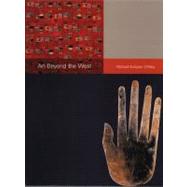
| Introduction: Art Beyond the West | |
| Africa | |
| India and Southeast Asia | |
| China | |
| Japan and Korea The Pacific | |
| The Americas | |
| Western and Non-Western Art | |
| The Art in Context | |
| Maps | |
| Africa | |
| Time Chart | |
| Introduction | |
| The History of African Art History | |
| African Prehistory | |
| Southern Africa | |
| East Africa | |
| Central Africa | |
| West Africa | |
| The African Diaspora and African-American Folklore Art | |
| Summary | |
| Boxes | |
| Maps | |
| India and Southeast Asia | |
| Time Chart | |
| Introduction | |
| The Indus Valley | |
| Buddhist Art | |
| Hindu Art | |
| Jain Art and Architecture | |
| Islamic India | |
| Colonial India | |
| Summary | |
| Boxes | |
| Maps | |
| China | |
| Introduction | |
| Time Chart | |
| The Neolithic Period (c. 7000-2250 BCE) | |
| The Xia (c. 2205-1700 BCE) and Shang (1700-1045 BCE) Dynasties | |
| The Zhou Dynasty (1045-480 BCE) | |
| The Period of Warring States (480-221 BCE) and the Qin Dynasty (221-209 BCE) | |
| The Han Dynasty (206 BCE-220 CE) | |
| The Period of Disunity: Six Dynasties (220-589 CE) | |
| The Wei Dynasty in Northern China (388-535 CE) | |
| The Sui (589-618) and Tang (618-907) Dynasties | |
| The Five Dynasties (906-960), Northern Song (960-1127) and Southern Song (1127-1279) Dynasties | |
| The Yuan Dynasty (1279-1368) | |
| The Ming Dynasty (1368-1644) | |
| The Qing Dynasty (1644-1911) | |
| Modern China (from 1911) | |
| Summary | |
| Boxes | |
| Maps | |
| Japan and Korea | |
| Time Chart | |
| Introduction | |
| The Jomon (12,000/10,500-300 BCE) and Yayoi (300 BCE-300 CE) Periods | |
| The Kofun Period (300-710 CE) | |
| Korea: The Three Kingdoms Period (57 BCE-688 CE) | |
| The Asuka (552-645) and Hakuho (645-710) Periods | |
| The Nara Period (710-794) | |
| The Heian Period (794-1185) | |
| Kamakura (1185-1333) and Koryo Korea (948-1395) Periods | |
| The Muromachi (Ashikaga) Period (1392-1573) | |
| The Momoyama Period (1573-1615) | |
| The Tokugawa (Edo) Period (1615-1868) | |
| The Meiji Restoration (1868-1912) | |
| The Modern Period (from 1912) | |
| Summary | |
| Boxes | |
| Maps | |
| The Pacific | |
| Time Chart | |
| Introduction | |
| Australia | |
| Melanesia | |
| Micronesia Polynesia | |
| Summary | |
| Boxes | |
| Maps | |
| The Americas | |
| Introduction | |
| The Pre-Columbian World | |
| South America: The Central Andes | |
| Time Chart | |
| Mesoamerica | |
| Time Chart | |
| North America | |
| Time Chart | |
| Summary | |
| Boxes | |
| Maps | |
| Art without Boundaries | |
| Introduction | |
| Postcolonialism | |
| Postmodernism | |
| Internationalism in the Postmodern and Postcolonial World | |
| Into the Twenty-First Century: The Future of Art Beyond the West | |
| Map Afterword | |
| The New Geographies of Contemporary Art | |
| Glossary | |
| Bibliography | |
| Picture Credits | |
| Index | |
| Table of Contents provided by Publisher. All Rights Reserved. |
The New copy of this book will include any supplemental materials advertised. Please check the title of the book to determine if it should include any access cards, study guides, lab manuals, CDs, etc.
The Used, Rental and eBook copies of this book are not guaranteed to include any supplemental materials. Typically, only the book itself is included. This is true even if the title states it includes any access cards, study guides, lab manuals, CDs, etc.